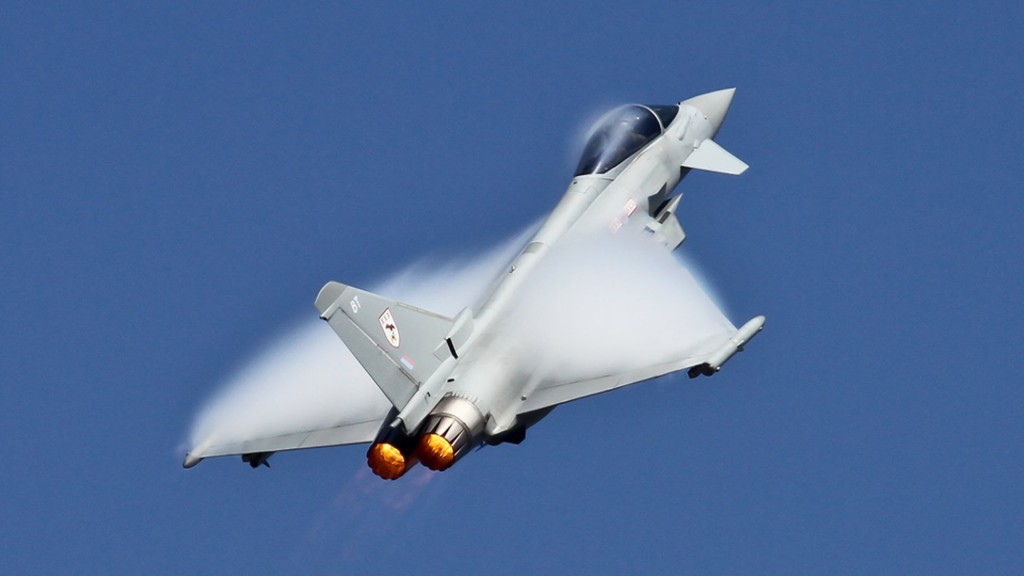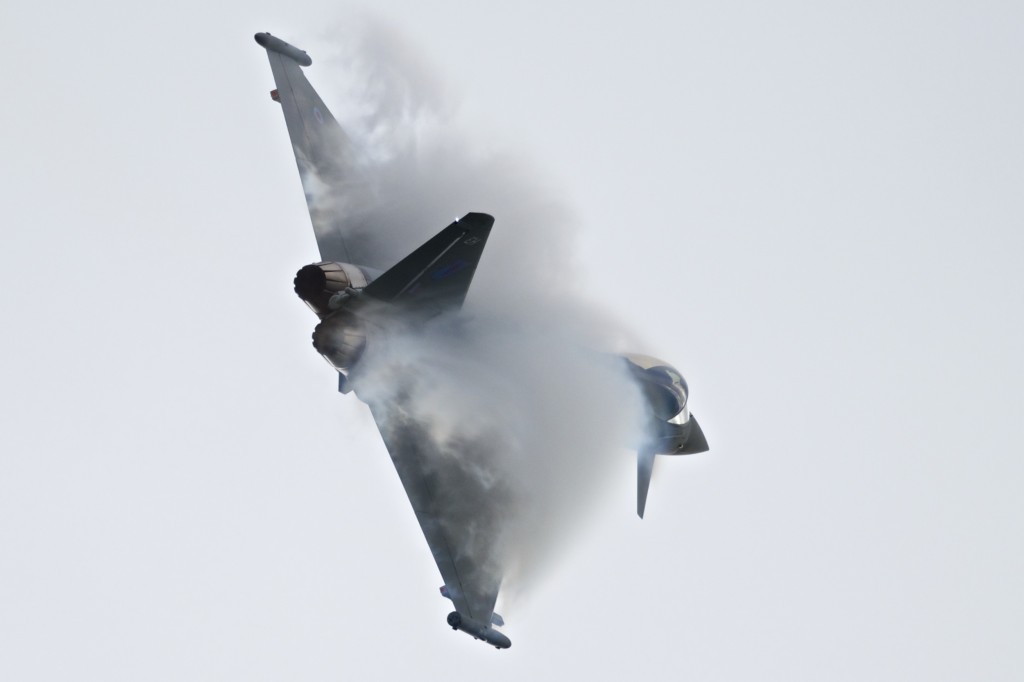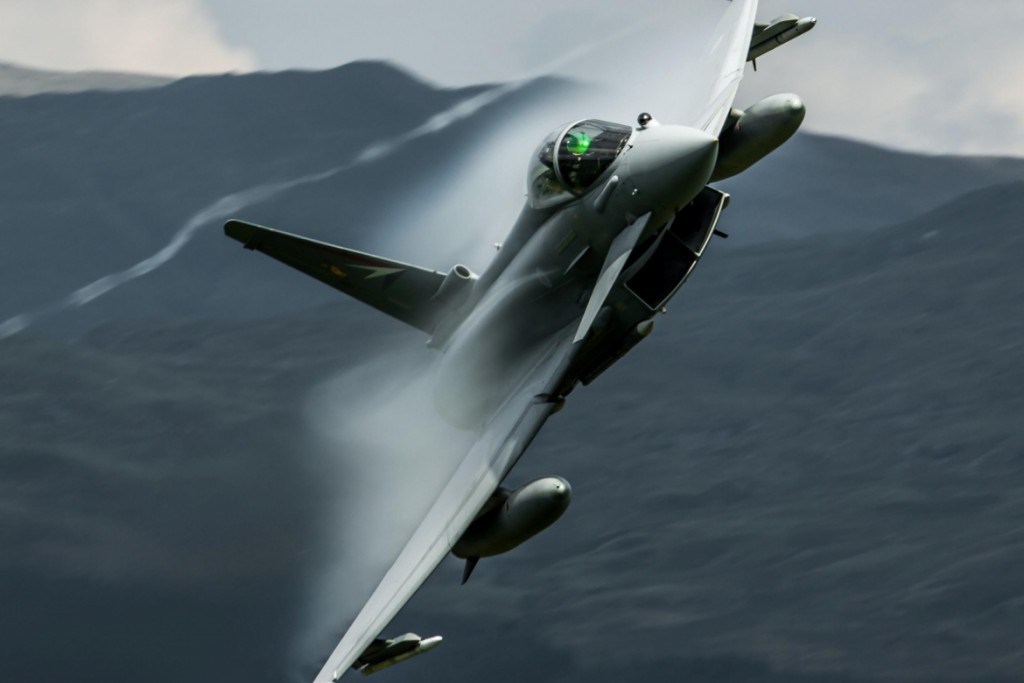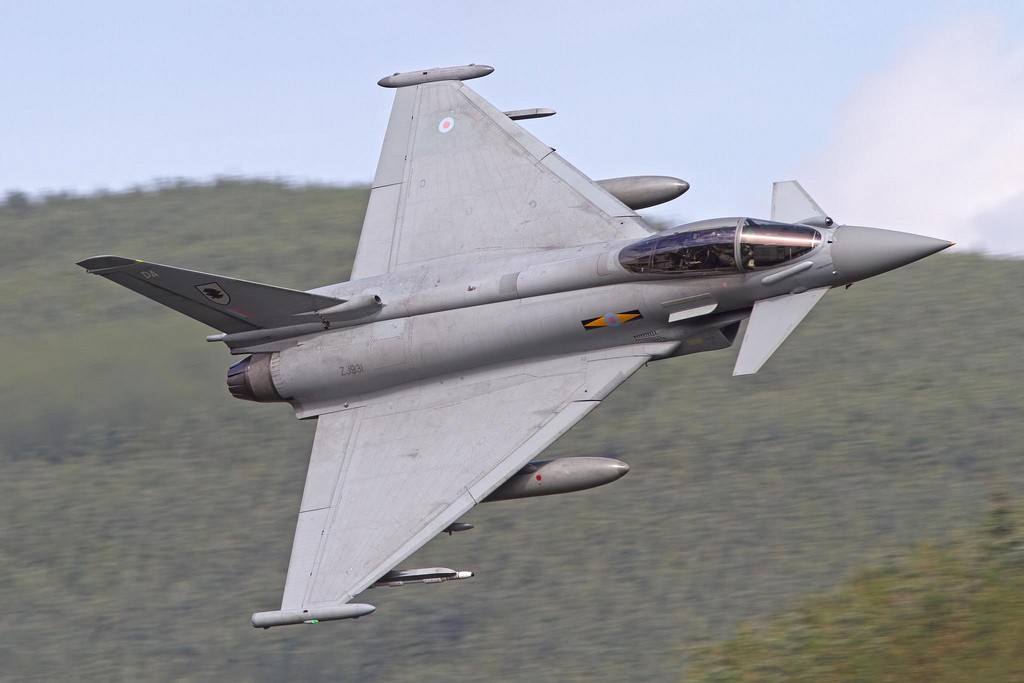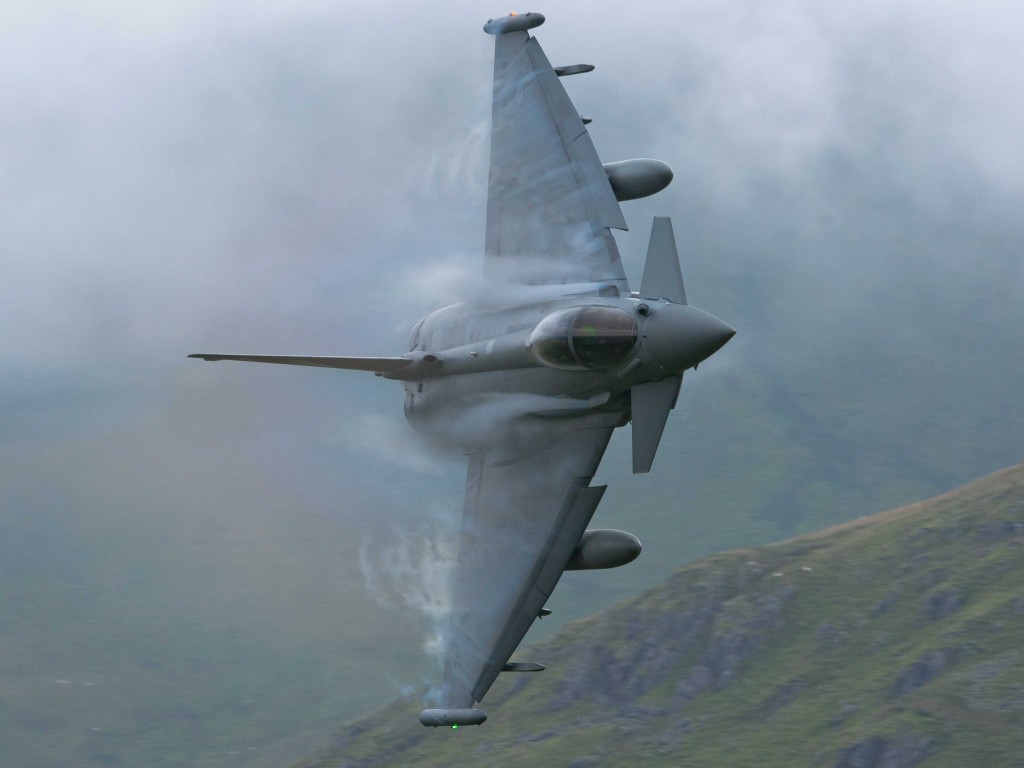The Eurofighter Typhoon is the Royal Air Force’s newest front-line fighter aircraft. It’s a multi-role combat aircraft – as most combat aircraft have to be these days: they are so expensive that the same aircraft type has to be able to fulfil many roles!
One of the main characteristics of Typhoon is its agility. While, given the capabilities of modern air-to-air missiles, opposing aircraft might never actually see each other during a fight (because they can shoot down the enemy from beyond visual range), there is still the chance that fighters could close to within ‘knife range’, where agility becomes all-important. Of course, from the point of view of the aviation enthusiast and airshow-goer, this also means that watching one of these aircraft display is a feast of noise, power, speed and seemingly impossible high-energy maneuvers. Sometimes the aircraft changes direction so quickly that condensation – clouds – form in the low-air-pressure areas above the wings and fuselage, like this:
Note: If you click on some of the images in this post, you may well find that you get a very large version of the picture to look at, in all its detail. Give it a go!
The next couple of photos of this remarkable aircraft appear to have been taken in the area known as the ‘Mach Loop‘, a low-flying practice range in north-western Wales. Whereas the normal lowest allowed limit is 500ft, here in the Mach Loop many different military aircraft types fly as low as 250ft above the terrain. Typhoon, of course, is no exception:
That last photo also clearly shows the bright orange plume from the afterburner, or ‘reheat’ – a system whereby raw fuel is sprayed into the hot jet exhaust where it ignites to produce extra thrust. It’s a great way of gaining more power but at a tremendous cost in fuel. And it makes one heck of a racket – we were once camping in our caravan and I heard this deep rumbling noise; I recognised it as the engine sound of a Typhoon using reheat. Apparently there was a Typhoon displaying at Plymouth Navy Day – thirty miles away from where we were camping. Wow.
Those orange diamonds/discs in the afterburner plumes are what is known as ‘shock diamonds‘ – the visible part of the standing-wave patterns in the supersonic jet exhaust stream. When you are close enough to an aeroplane with its afterburners lit, you will be subjected to intense shock waves and you feel everything inside you shaking – it’s quite a feeling!
So, there you go. Typhoon – a ‘Beautiful Destroyer’ – but wow, what an aeroplane!


